By now, you’re probably familiar with my rap — since becoming a downhill skier ten years ago, my favorite mountains are the ones that don’t get the big feature articles, the ones that don’t attract several hundred thousand visits every season, or end up on people’s Top 10 lists. That said, I’ve also been to my share of popular destination ski resorts, both in the northeast and out west. While I can’t say that most are my cup of tea, within a few hours of arriving there, it’s pretty obvious why they attract so many people. They usually have a combination of decent access, dependable conditions (thanks to natural snow, manmade, grooming or a combination of all three), up-to-date lifts, lots of terrain aimed at their target demographic (either families, experts, or both), extensive slopeside amenities (hotels, condos, restaurants), along with a marketing team that knows how to position these assets to potential customers.
Conversely, whenever people get into discussions about the smaller, underrated joints, sooner or later the conversation always turns into “This place is great. Why don’t more people don’t come here?” It’s a legitimate question, but one that rarely leads to an answer everyone can agree on. If you’re trying to understand why a ski area becomes a “Mountain Less Traveled,” it seems reasonable to reverse the points about the popular destinations mentioned above, thus:
- Location: too far away or too close to a more popular ski area
- Unreliable conditions: not enough natural or manmade snow
- Terrain inadequacies: too difficult, not challenging enough, or too small to bother
- Uphill capacity: slow or otherwise undependable lifts
- Lack of slopeside amenities (hotels, condos, restaurants, etc.)
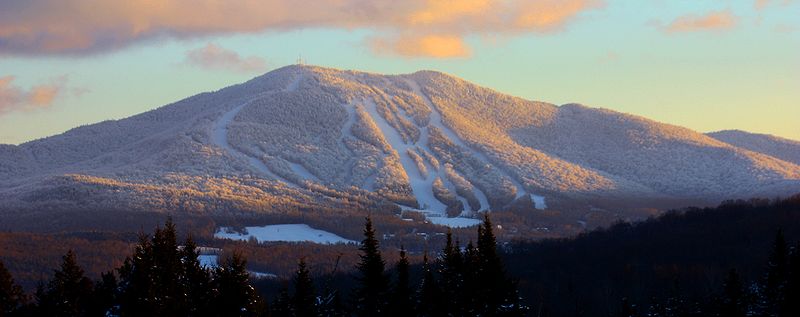
You can apply these bullet points to any under-the-radar hill in the northeast that “deserves” a bigger following, so let’s try a few of my favorites.
Under its new owner, Magic Mountain VT is finally beginning to make inroads against negative perceptions that have dogged it for years, including (#2) erratic conditions, (#4) untrustworthy lifts, and (#5) it was best suited for advanced or expert skiers. Nearby Ascutney VT was unable to reach critical mass based on one crucial violation (#2) — stingy natural snowfall combined with inadequate snowmaking efforts that pushed away customers, which prompted them to rarely use their top-to-bottom high-speed quad (#4), resulting in even less business and eventually its recent closure. Well-regarded Pico Mountain VT would be much more popular if it weren’t located right next to Killington (#1). In New York’s western Catskills, Bobcat broke all of these commandments and finally closed after the 2005 season. But in an example of an exception proving the rule, Plattekill, only a few miles away, violates the same five tenets but manages to stay in business.
What’s fascinating about these examples is that it really doesn’t matter whether the alleged infractions are true on an absolute basis. If a perception exists among a sufficient amount of people, it may as well be reality. Break one or two of these five rules and your favorite mountain can be viewed as a quirky maverick, but three or more strikes often indicates that a trip to the NELSAP List may be in its future. Of course, the wild card in this discussion is whether a ski area can stay afloat through wise fiscal management, force of will, or sheer luck.
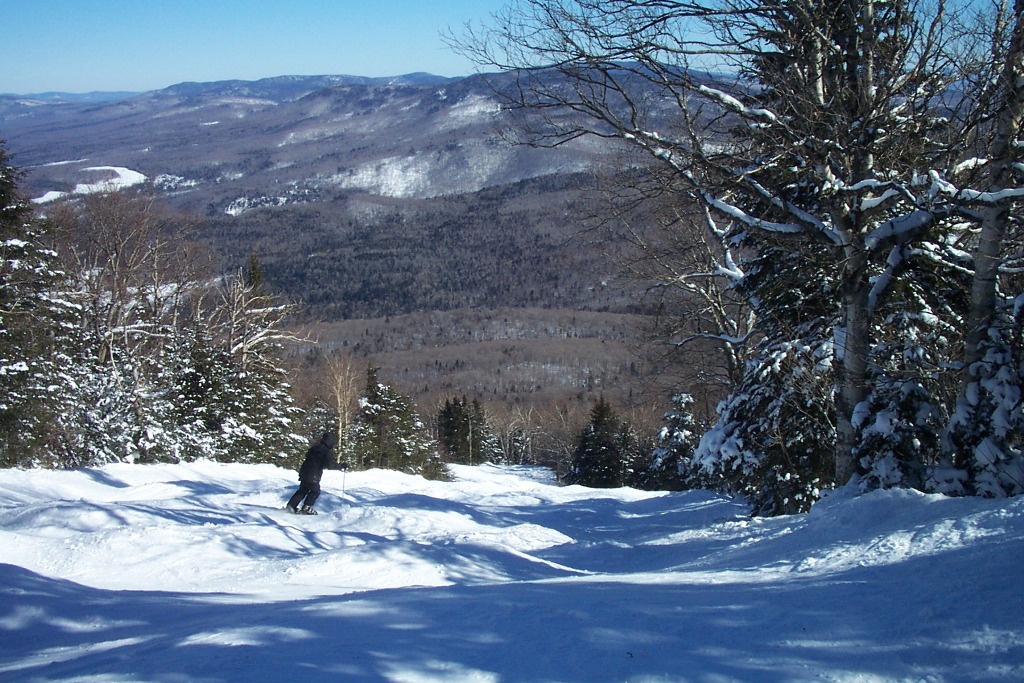
Which leads us to one of the more puzzling test cases of my theory: Vermont’s enigmatic Burke Mountain — a ski area that has been in operation for more than five decades, but is still hiding in the proverbial shadows. With less than ten visits at Burke, I have more questions than answers. All I know is after each of my days there, even the ones with less than optimum conditions, I walked away scratching my head wondering why more people weren’t skiing there. Before I went for the first time in 2001, I had heard it referred to as “a fun mid-sized hill with piles of potential,” “criminally underrated,” and “soon to be discovered,” and a decade later, these same taglines still fit.
Burke Mountain is located in Vermont’s Northeast Kingdom (aka: the “NEK”), a rustic, bucolic, and sparsely populated region along the Quebec border that’s often described with enticing adjectives, such as those found on the NEK tourism website: “rolling hills, rising mountains, pristine lakes, thick forests, lush pastures, meandering streams, picturesque villages, enduring farmsteads, covered bridges, and impressive historic edifices.” In short, it’s exactly what most non-Vermonters associate with this state.
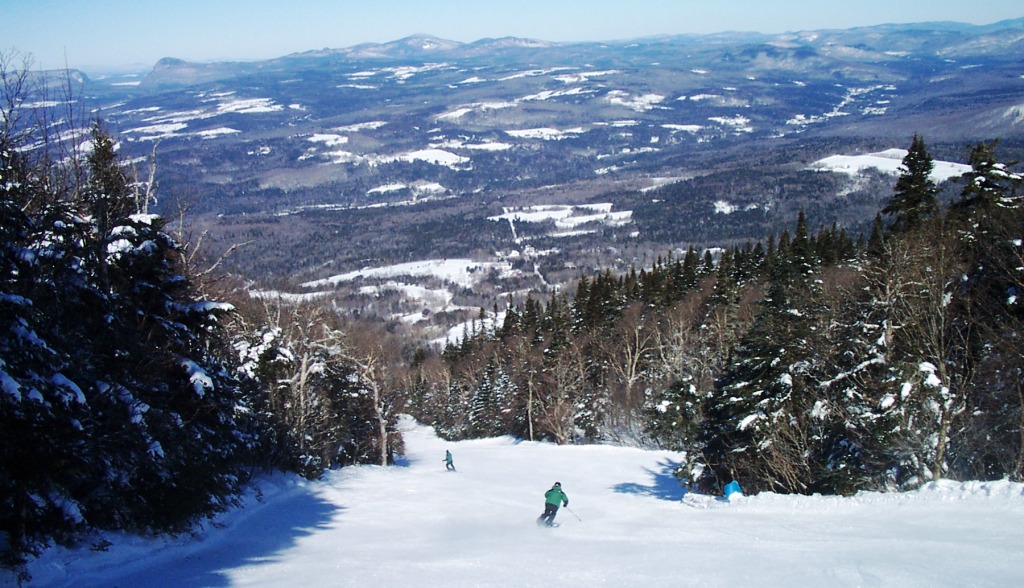
The problem is, being identified so closely with the NEK is a double-edged sword that leads straight into the jaws of Rule #1. Even though Burke is only seven miles from the busy north/south I-91 corridor — putting it within 3.5 hours or less for people from the Boston region and 2.5 hours for Montrealers — it’s gained a reputation for being a long drive from everywhere. Since I don’t live in either city and can only speculate about the question of accessibility, the fact that people from both regions can stop at popular mountains on the way to Burke or can reach more popular resorts in approximately the same drive time may help explain the “too far away” label.
Moreover, the fact that Burke is located in the same geographic region as its more fabled ski-area sibling Jay Peak has led to inevitable comparisons of two relatively dissimilar kettles of fish. It’d be similar to upstate New Yorkers comparing Gore and Whiteface. Yes, they’re part of the same mountain range and about an hour away from each other (just like Burke and Jay), but everyone knows that each has its own specific selling points, and that you don’t go to one expecting what the other does better.
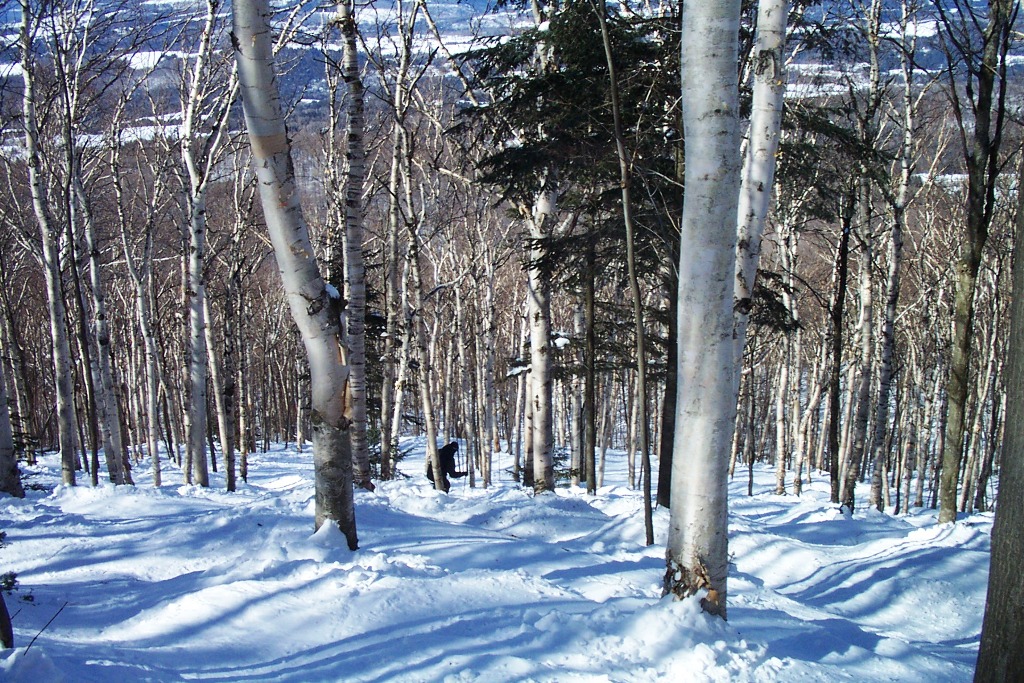
The Jay association also has negative repercussions on Burke for Rule #2: conditions. Burke’s annual snow total sits somewhere in the low 200-inch range, a decent statistic for most places in this part of the U.S. Meanwhile, Jay, which averages 350 inches of snow per season, the most in the East, makes Burke look like Dry County. There’s no question that, as a rule, Burke gets neither the colossal dumps nor the small refresher storms that hit Jay, Stowe, or Smugglers Notch.
But with low crowds, the snow gets a small fraction of the beatdown like at the big boys, both on-piste and more specifically in Burke’s tightly-spaced, well-pitched glades. Talk to anyone who’s been there. This is a game-changer, especially when you go there a day or two after a dump, and aren’t forced to spend the day huffing and puffing through sloppy seconds in the woods. In short, between the terrain, the lack of people, and the almost always better-than-expected snow conditions, these are some of my favorite trees in the East.
Speaking of on-piste — although Burke is only about the size of Pico, it has what can be argued as some of the best intermediate terrain in the northeast. Covering around 1,700 vertical feet, these winding, rolling tree-lined cruisers are borderline sublime, including what might be my favorite blue square east of the Rockies: East Bowl.
This trail’s short traverse at the top, and an even longer, flatter traverse at the bottom combine to dissuade the unmotivated from doing laps there. In a nice bit of truth in advertising, Burke’s trail maps label East Bowl “not snowboarder friendly,” which keeps two plankers very happy.
Burke gets repeatedly dinged by the HSQ-loving masses for having a main lift, the Willoughby Chair, that has been called variations of “mind-numbingly slow,” “brutally cold,” and “just plain unpleasant” (#4) by customers for years. Maybe I’m going uncharacteristically glass-half-full in my advancing age, but when there are never lift lines at the base of a lift, as is the case at Burke, you really shouldn’t be complaining about spending an extra three or four minutes on a chair. Even if it’s in the single digits and the wind is howling — in which case the speedy Poma that runs parallel to the chair can be a great way to get uphill — just be happy that there won’t be any people poaching your line in the woods or getting in your field of vision as you scream down a groomer.
While the 2005 installation of a detachable quad on the green terrain at the bottom of the mountain may have been great for one potential revenue stream (beginners and their families), putting a high-speed chair on the main terrain would seem to be an easy fix to attract the majority of people who’ve been on the fence about Burke for years. That is, if the ski area can afford it, which brings us to #5.
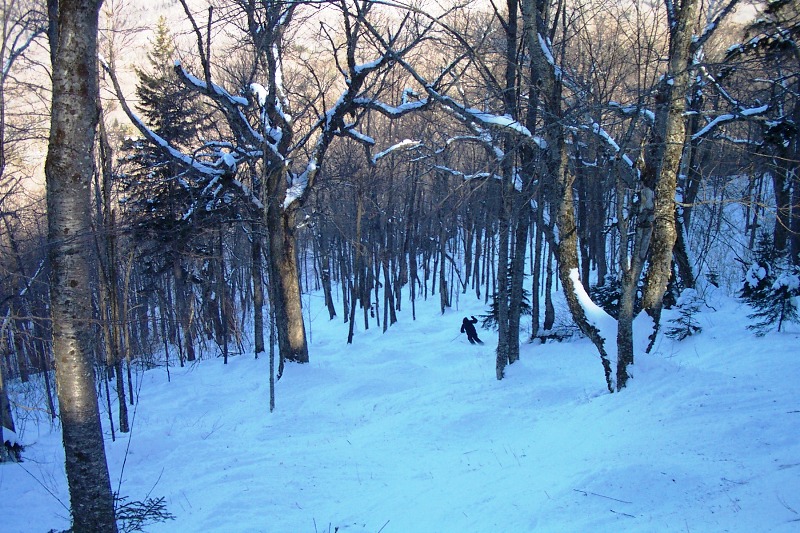
Going through the musical chairs of Burke’s owners/investors since the late 1980s is a sad exercise for a proud mountain like this. That said, Burke’s website mentions that it’s received “partial findings on its Act 250 master plan,” which indicates that at least some of its extensive on-mountain and slopeside projects (“1,000 residential units, commercial space, 155 acres of additional ski terrain, three new ski lifts, snowmaking improvements, additional summer recreation facilities, and expanded infrastructure”) may be inching forward.
Given what has gone on at other similarly underfunded ski areas, combined with the current financial climate, who knows if and when any of these plans will become reality. And what kind of effect any of this will have on Burke’s profile is anyone’s guess as well. Will slopeside condos bring the ski area the kind of stability that has evaded it in the past, or is the real solution a high-speed chair that goes to the summit, after which everything else will follow?
I’m not sure what I’ve proved through this discussion, and why anyone would need to cheerlead for such a great mountain, but it has made me realize that Burke is on a Top 10 East Coast list (mine) and that I need to go back there this season.

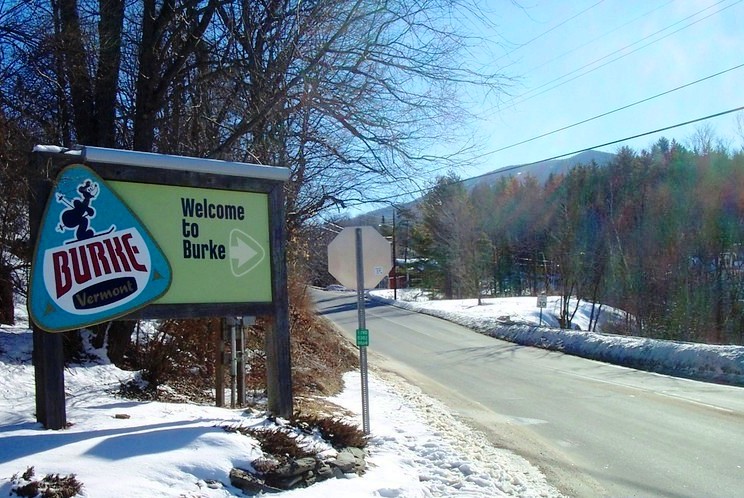
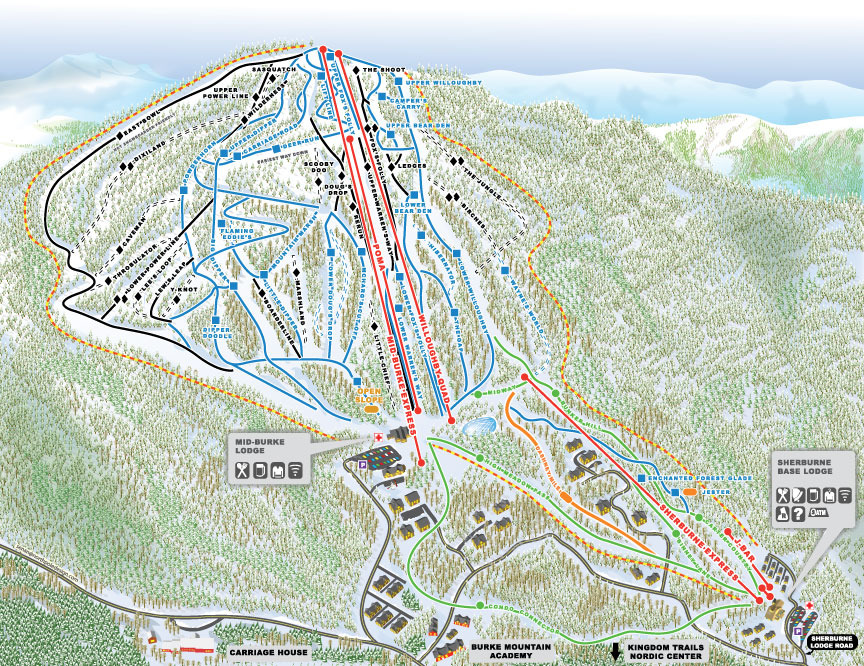
Great article. I’ve never skied there, but I was in Burke for the first time this summer. I went on a weekend camping trip to bike the Kingdom Trails and the other trails around the town.
The trail network is really impressive. It is obvius a lot of work has gone into making the whole town of Burke a biking destination. It felt like a close knit community and it was inspiring to really feel peoples passion for their town.
That being said, it would be interesting to know if the development of the biking scene has in any way carried over to helping the ski scene. Or maybe the ski scene was the base for the biking scene. Either way, it seems to be a nice symbiotic relationship and maybe there are examples there for the North Creek development to learn from.
One bone to pick in the article.. are all skiers happy when a trail is not snowboarder friendly? I’ve never understood the dislike of sharing a trail with a snowboarder!
Great article! Burke is one of my favorite mountains. I was lucky to go to college 10 minutes away, had a season pass, and would often ski before, between, or after classes. There would be some cold mornings in January that I would be the only skier on the mountain.
East Bowl is truly a magical trail, with views of Mt.Washington, and a real remote feel, one of the most remote trails in New England.
Other interesting trails include the narrow Carriage Road, the twisty Dipsy Doodle, and the variable Powderhorn.
It really is a hidden jewel, any ski enthusiast must check it out!
Jeremy
I skied there 3 times over the last six years. Definitely New England old school feel to the place (good). There are lots of trails accessible from the poma, which is speedy, fun to ride and avoids the mid winter wind tunnel conditions sometimes found on the last two hundred meters of the summit chair. The first time I went into some tight glades off East Bowl, they kept going so long, I thought I was going to come out of them somewhere on Jay Peak! 🙂
Boston to:
Jay: 3:56
Stowe: 3:36
MRG: 3:36
Bush: 3:34
Stratton: 3:22
Burke: 3:14
Snow: 3:12
Okemo: 2:58
Kmart: 2:55
I just love the distance arguments against Burke. They just don’t add up. Its almost all highway, so times above may slant in Burke’s favor even more in bad weather when secondary VT roads are the suck. Especially considering how much better NH plows roads than VT.
And for the CT and NYC folks coming up I-89 to Northern Vermont, from the 89/91 split it is 1:19 to Burke. Excepting Kmart/Pico at 47 minutes (not counting traffic and don’t you dare speed), no NoVT ski area is closer than Burke to the interstate intersection.
Long time Burke Homer here and proud of it. Maybe Burke shouldn’t need homers posting about how great the mountain is but its brand recognition still is lacking comparing to the other major ski areas in VT. That said, despite there still not being any lift lines, the increase in skier visits since the HSQ went in has been noticeable.
Just found this blog & have been a daily visitor. Great article on Burke. Never been, but adding it to the list. (Simply too far from NYC) Also surprised to hear about Ascutney, great family mountain vibe with challenging skiing.
Nice writeup James. Burke is truly a beautiful place. I also like the ski areas that are less traveled. They have a certain vibe that the big places just can’t match. The pictures that you took are stunning and bring back great memories of skiing Burke. It’s funny that you mention Bobcat. Most people have never heard of the place. I also loved Bobcat in its day. You could go there days after a dump and still ski unmolested powder. Bobcat was never in the business of making money. It was a family run place and they hoped to break even at best. Unfortunately due to illness and I belief deaths in the family, the area chose not to continue operation. What a shame….it was also a “criminally neglected” ski area. Thanks for the great writeups. Matt
Hi James, attended 1996-2000, graduated May of 2000, wish I could ski now as much as I did then… JD
“I was lucky to go to college 10 minutes away, had a season pass, and would often ski before, between, or after classes.”
When did you attend Lyndon? If my chronology is correct, I believe that your Snowjournal posts about Burke are what inspired me to go there the first time.
ka2kci wrote
“I also loved Bobcat in its day. You could go there days after a dump and still ski unmolested powder. Bobcat was never in the business of making money. It was a family run place and they hoped to break even at best.”
Thanks for the comment, Matt. Don’t get me started on Bobcat.
Josh: I’ve never been to the NEK during the warm-weather months, but I’ve heard great reports about the mountain biking trail system. It’s good to see Burke working that angle. Wish I didn’t live so far away; I’d love to ride there.
I share the same sentiments about the smaller ski areas. In my years, I’ve been to many of the large resorts and even worked for 7 years as a Mountain Ambassador at Killington. I think that is what gave me the appreciation of the smaller and less-known mountains.
Burke is further than Stowe and Jay Peak from where I live, so it is uncertain that I would make the effort to drive over 7 hours to ski there. I suppose if I’m already up that way visiting my friends at/near Jay, that I might do a day at Burke, but that has yet to happen, as I only get up there once a year and after driving for 7 hours, I just want to stay put for a few days until it is time to go home.
It doesn’t seem to be much further from Boston though, by only a few minutes.
After my recent trip to interior BC, to two smaller and lesser known mountains, I understand how distance, or at least percption of distance, and the lack of slopeside amenities can steer a family vacation to other resorts. I think these are the two biggies that differentiate the less-known from the more well-known resorts.
As James states, the snow quality is greatly affected by the skier-traffic. This is one of the beautiful things about the mountains less-traveled. I just returned from two small resorts in BC that have pretty low skier traffic. No high speed lifts, and no lift lines (to speak of…if you consider the morning line-up of 20-30 people for first tracks at Red Mountain…there were maybe a dozen or so at Whitewater after a snowfall).
I just ran across this excellent article.
I’m one of those homers that rolls their eyes everytime they hear “Burke sooooo far away” 🙂
JamesD – if your ever headed up to Burke again look me up (I’m on AlpineZone). I’d be glad to try to show you some spots you may not have found yet.
P.S. The lift ride to the top may be a shade over 5 minutes by next year…
To expand Riverc0il’s list of drivetimes to Hartford, CT, Burke is the closest Northern VT ski area:
Mt Snow: 1:51
Magic: 2:06
Stratton: 2:10
Okemo: 2:14
Killington: 2:42
Burke: 3:05
Sugarbush: 3:15
MRG: 3:22
Stowe: 3:19
Jay: 3:51
Smuggs: 3:57
Burke mtn. is a true gem! hidden, so to speak, in the nek, it stands on it’s own. i’ve been skiing burke for 20 yrs. and love it!a new ownership that knows and respects the people of this community will surely provide decades of fun and satisfaction to the east burke area. love the mountain, whether it’s winter or kingdom trails time in the warmer weather!! here’s to the landowners that make it happen. happy holidays, see ya on the slopes…..